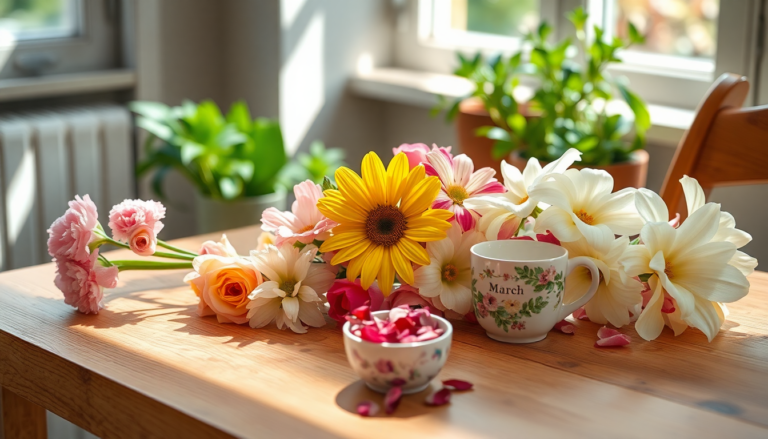Argomenti trattati
The world of flowers isn’t just about vibrant colors and sweet scents; it’s a window into our hearts, often weaving intricate stories tied to human emotions and experiences. Did you know that each month boasts its own special set of birth flowers? These blooms carry unique meanings that reflect the traits of those born during that time. By understanding these flowers, you can add a personal touch to your celebrations and gifts, transforming them from mere arrangements into meaningful expressions of love and connection.
Why Birth Flowers Hold Such Allure
Birth flowers are a charming way to celebrate your birth month, acting as visual symbols of personality traits and life experiences. Each month features two flowers—one primary and one secondary—chosen not only for when they bloom but also for the rich symbolism they embody. For instance, daffodils, which grace us in March, symbolize resilience and predictability, while chrysanthemums, blooming in November, reflect depth and complexity. Isn’t it fascinating how these flowers can mirror our personalities?
This connection between flowers and birth months isn’t just a random coincidence; it’s rooted in a tapestry of cultural traditions, from Victorian customs to Greek mythology. In ancient times, flowers were linked to deities and seasonal shifts, imbuing them with significant meaning. As we explore the stories behind these flowers, we uncover how they resonate with our emotional landscapes, offering profound insights into our lives.
Moreover, these flowers make for thoughtful gifts, infusing a personal touch that speaks directly to the recipient’s birth month. Whether it’s a birthday celebration or an anniversary, incorporating birth flowers can elevate the sentiment behind the gift, turning it into a cherished reminder of a special moment in time. How can you not appreciate a gift that also tells a story?
Diving into the Meanings of Each Month’s Flowers
Each month brings its own enchanting flowers that capture the essence of the season. Take January’s flower, the carnation, for example. Its meanings vary with color—red and pink represent love, while yellow can hint at disappointment. As we step into spring, we find April’s flower, the daisy, symbolizing innocence and purity—perfect for representing new beginnings. Can you think of a better way to celebrate spring?
As we journey through the months, we encounter blossoms like the cherry blossom in March, symbolizing renewal and optimism, and the tulip in April, which conveys true love and fame. Each flower tells its own story, reflecting the emotional connections people share with these beautiful blooms. Consider the resilient snowdrop, a symbol of hope that bravely emerges from the ground, heralding the arrival of spring.
This interplay between flowers and their respective months goes beyond mere coincidence; it mirrors a deeper understanding of the human experience. Flowers have long served as metaphors in art, literature, and culture, expressing a range of emotions from love and friendship to sorrow and remembrance. Isn’t it incredible how these natural wonders can enhance our appreciation for life’s complexities?
Practical Tips for Using Birth Flowers in Celebrations
Incorporating birth flowers into your celebrations can be an exciting way to personalize gifts and arrangements. Start by discovering the birth flowers for your loved ones, then consider crafting floral arrangements that showcase these blooms. This thoughtful approach can turn a simple bouquet into a treasured keepsake. How special would it feel to receive flowers that are personally meaningful?
When selecting flowers, think about their meanings and how they relate to the recipient’s personality. For example, if you know someone born in May, a bouquet of hawthorn flowers could symbolize hope and happiness—qualities that might resonate deeply with them. And don’t forget about the presentation! Adding a note that explains the significance of each flower can really enhance the personal touch of your gift.
You can also weave these flowers into various aspects of celebrations, from weddings to birthdays. Imagine using seasonal birth flowers in your wedding bouquet; not only does it add beauty, but it also infuses the ceremony with profound meaning, connecting the couple’s journey to the symbolism of the flowers. Wouldn’t that make the day even more special?
Lastly, think about the aesthetic of your arrangement. Create a harmonious blend of colors and textures that reflect the essence of the birth flowers while also catering to the recipient’s tastes. The beauty of flowers lies not just in their meanings but also in their visual appeal, making them a timeless choice for any occasion. So, are you ready to bring the magic of birth flowers into your celebrations?

